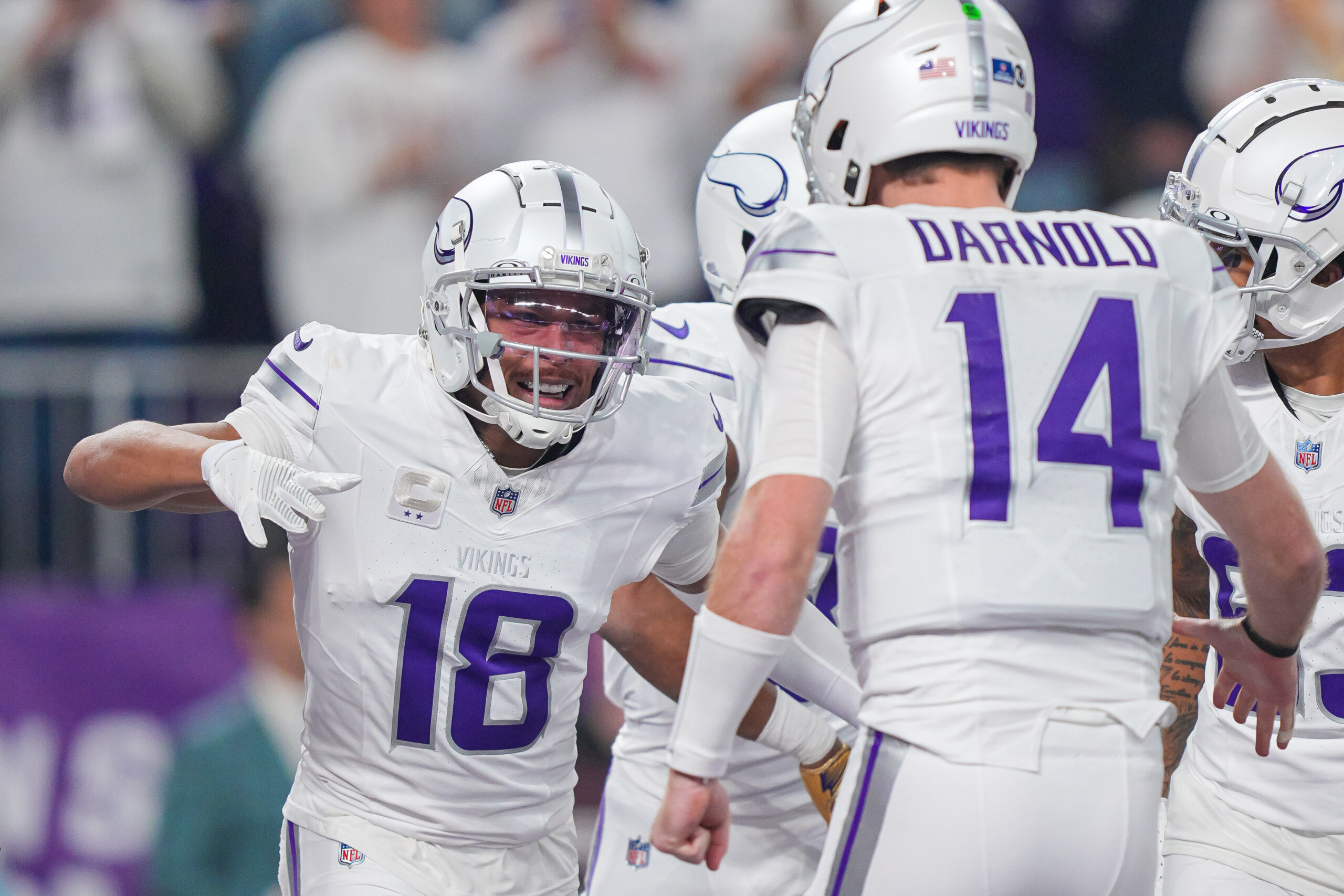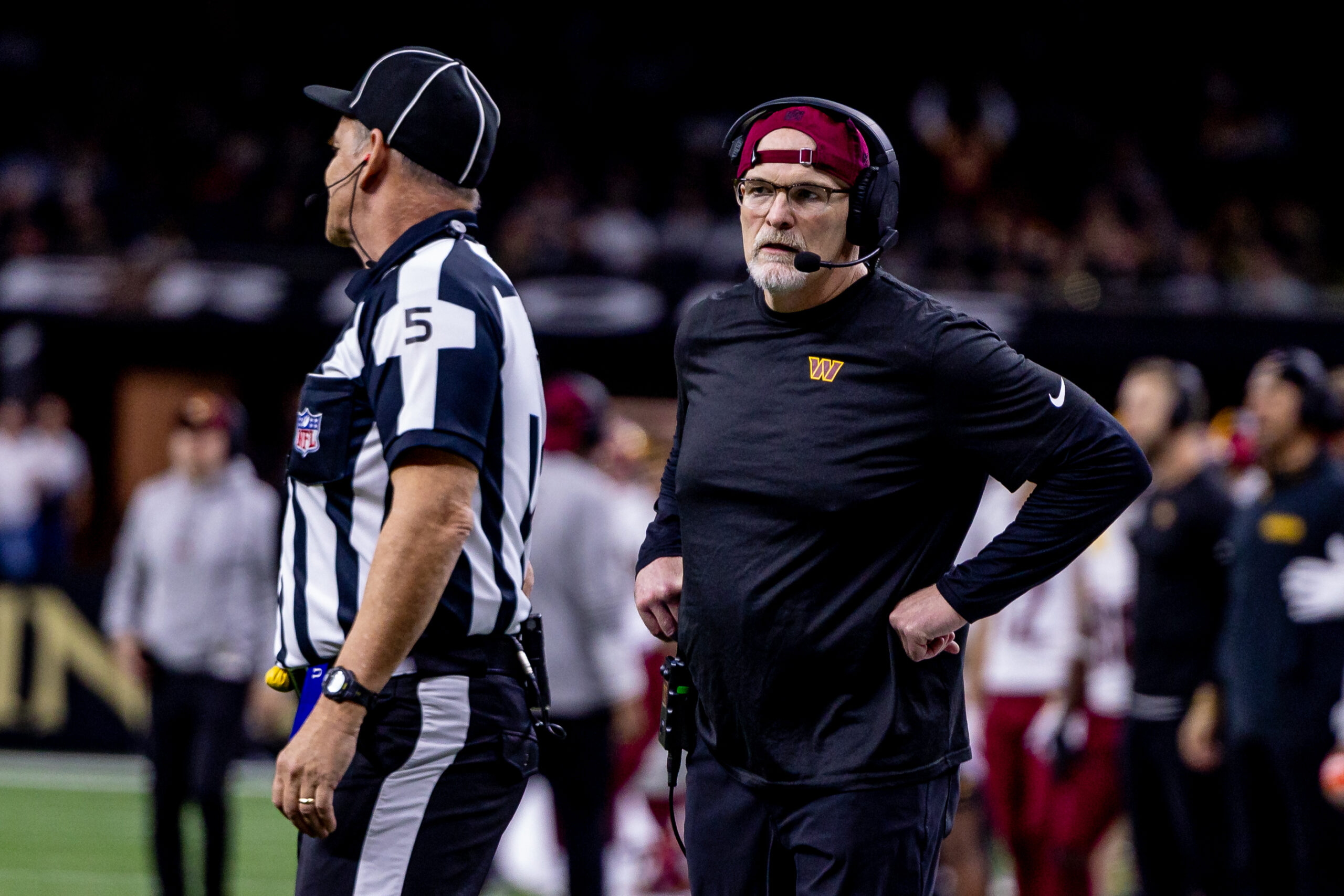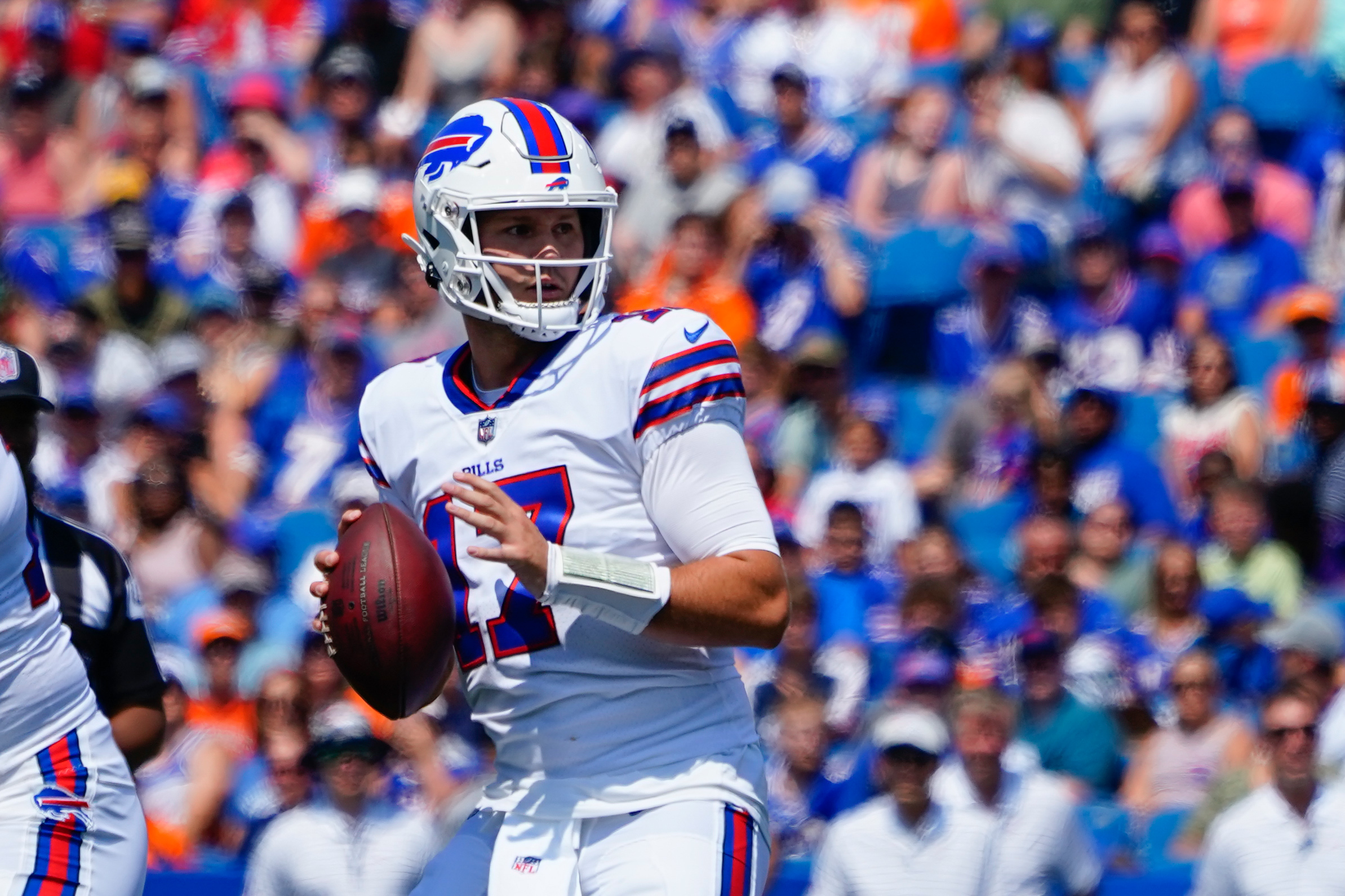NFL Analysis
9/19/24
7 min read
Why NFL Passing Offenses Are Broken In 2024
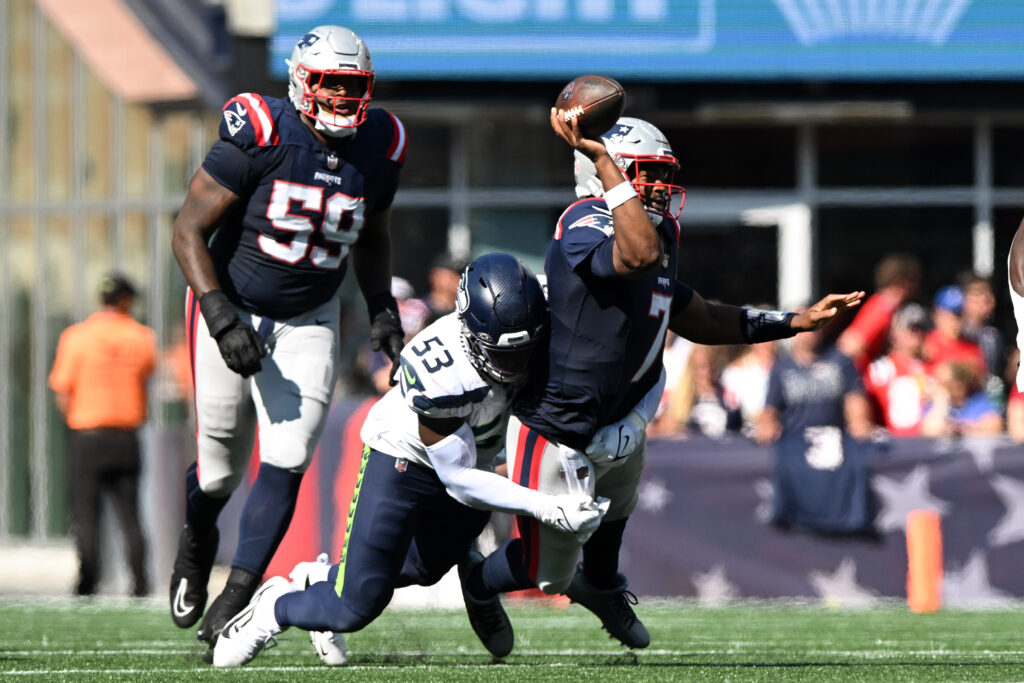
Two-high defenses are killing offense. That’s not true, but it’s the prevailing talking point about why passing yards and scoring are down through two weeks of the 2024 NFL season.
When we talk about two-high defenses, we mostly talk about a pre-snap shell. Defenses line up two safeties deep to not give away what the intention will be post-snap.
Even now, when defenses are leaning more into these looks, 53.3 percent of plays this season have still come with a single-high safety, according to TruMedia. Cover-3 is still the most common coverage played league-wide at 33.8 percent. The rate of Quarters and Cover-6 (a quarter-quarter-half coverage) have increased, but it’s not as if this is happening on every play.
Per MatchQuarters, nearly 30 percent of defensive coverage snaps have used a middle-of-the-field disguise — either showing single-high and rotating to split-field safeties or vice versa. That’s up from 25 percent in 2023. That’s a big jump, but it still leaves 70 percent of plays with defenses showing the safety shell that will be in the coverage.
Defenses are getting more complicated on the back-end, but it’s not as if offenses are shocked by this revelation. Declining offense isn’t just from these shifts in coverage.
Declining aDOT has been happening for the past decade or so; it’s not something new that has completely derailed offenses in the past year. The two-high revolution has impacted offenses, but it's such a small part of what is happening on the field.
However, it’s indisputable that offenses, especially passing offenses, have struggled in the first two weeks of the season, so let’s take a look at a few other reasons why.
Running Is More Efficient Thanks To QBs
By now, you’ve probably seen numbers showing that rushing efficiency has closed the gap to passing efficiency. That is true.
Per TruMedia, the EPA per play on dropbacks and rushing attempts has never been closer.

With defenses being lighter and shifting the top focus from stopping the run to stopping explosive passes, there has been more room to run, and offenses have taken advantage. Teams like the Arizona Cardinals, New Orleans Saints, and Detroit Lions use heavier personnel to create advantages in the run game.
Rushes into stacked boxes are at a five-year low, and we know that rushing efficiency is highly correlated with how many defenders are in the box. We also know the number of defenders in the box is driven by the personnel on the field. However, some of these heavier offenses, like the Cardinals, have still gotten advantageous run looks with multiple tight ends — or, in the case of the Miami Dolphins, running backs — on the field at the same time.
Still, rushing with running backs has only slightly jumped in efficiency but hasn't changed much overall.

The biggest shift in running comes from the quarterbacks. While we might not have the golden age of Manning/Brady/Brees-type passers, we’re absolutely in the golden age of mobile quarterbacks.
With defenses trying to force quarterbacks to throw the check-down, a significant number of quarterbacks can use their legs as the check-down option.
Through two weeks, there have been more scrambles than in Weeks 1 and 2 in previous seasons, and their efficiency has jumped by more than a yard per carry over last season.
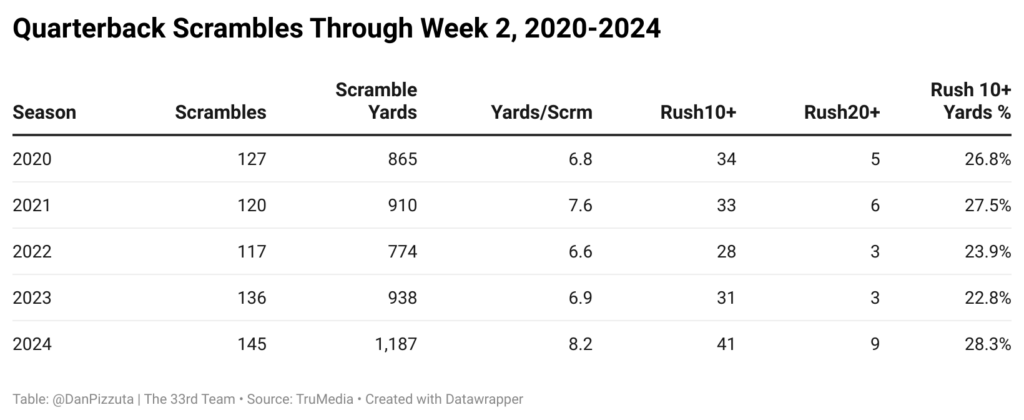
The quarterback scramble rate jumped from 4.4 percent in 2020 to 5.1 percent last season, and it's now 6.5 percent so far in 2024.
Defenses Are Killing On Third Downs
It’s hard to score when offenses cannot stay on the field, and that’s where we are in 2024. Offense is down a bit on early downs, but not by a crazy amount.

As has been widely documented, passes have gotten shorter. The average depth of completion has dropped from 5.2 yards in 2023 to 4.8 yards this season. That was as high as 6.1 in 2020.
With shorter passes and defenses being better at tackling, there have been more third downs. Just 42.8 percent of completions on first and second down have picked up a first down or touchdown this season. That rate was 44.6 percent last season and 52.5 percent in 2020.
When defenses get to third down, this has been where they’ve been their most terrifying. The league-wide third down conversion rate is 37 percent. That was 39.5 percent through Week 2 last season and 44 percent in 2020.
The biggest shift has been how often defenses are bringing down the quarterback. The sack rate has nearly doubled since 2020.

The talk about defensive shifting has mostly focused on what happens on the back-end. Still, the best defenses are creating confusion more often with the front seven, especially when teams get into obvious passing situations on long third downs.
We’ve seen the rise of sim pressures and double-mug looks, having both linebackers in the A-gap at the line of scrimmage, but there have been defenses taking those to the extreme. Stressing the quarterback and the offensive line before the snap has created more pressure and more sacks.
Here’s a four-man rush from the Seahawks that brought down Jacoby Brissett on a third down in Week 2.
— Dan Pizzuta (@DanPizzuta) September 19, 2024
On Sunday Night Football, the Chicago Bears got C.J. Stroud with a five-man rush that showed seven possible rushers, dropped edge rusher Austin Booker into coverage, and used a stunt with LB Tremaine Edmunds.
— Dan Pizzuta (@DanPizzuta) September 19, 2024
Then, there is Brian Flores on a third-and-12 showing a five-man front with four edge rushers and Jerry Tillery. This isn’t even the most chaotic thing Flores did to Brock Purdy and the San Francisco 49ers last weekend.
— Dan Pizzuta (@DanPizzuta) September 19, 2024
Touchdowns Aren’t Happening In The Red Zone
If we’re wondering where scoring is going, take a look at the red zone. Through two weeks, offenses are scoring a touchdown on 47 percent of red zone trips. At this time last season, it was 57 percent.
That’s a significant dip in success where touchdowns are most likely to happen. Teams have gone 64 percent in goal-to-go situations.

Offenses are completing 47.6 percent of passes in the red zone this season. That rate was 57 percent at this point last season. Just 52.5 percent of completions in the red zone have resulted in first down or touchdown, down from 57.6 percent through two weeks last year and 66.5 percent in 2020.
Defenses are blitzing less and getting more pressure in the red zone. Efficiency is still down from previous seasons when quarterbacks weren’t pressured in the red zone, but it’s worse when pressure arrives.

With more defenders in coverage, even when the defense is showing more pressure looks, the coverage has been too good, and there are fewer options for the offense in the condensed space. Defenses are playing more Quarters in the red zone, which protects against the back of the end zone and allows defenders to rally to the ball when thrown in front of them.
Red zone runs haven't helped either, with a 42.5 percent success rate, down from 51.8 percent in 2023.
Time Of Possession Is Leading To Fewer Drives
With more running, whether called runs or scrambles, more time is taken off the clock. That’s led to longer time of possession and fewer plays.
Through two weeks, there have been 681 drives. That’s 24 fewer than through two weeks last season. That’s obviously going to impact the raw counting stats.

Offensive efficiency is definitely down, and that comes from better defensive execution.
However, some of the drop has also come from fluky situations like third downs and red zone efficiency. With fewer plays, the failure to connect in those spots will be more apparent, but we also shouldn’t expect offenses to fail so often in those key spots for a full season.
Defense is no longer just a reactive part of the sport; we’re seeing defenses dictate their terms more than ever. That side of the ball has the upper hand at the moment, and we’ll see if that can sustain and explain the 2024 season.

